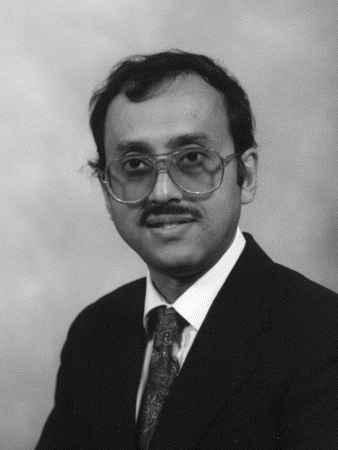Robust Spin Generates Hope for Spin Based Computers
29 Mar, 2007 10:46 am
Like a top spinning about its axis, an electron constantly rotates about its own axis creating a tiny magnetic moment known as the ?spin?. If an electron is placed in an external magnetic field, then the direction of this axis can assume only two orientations: parallel to the magnetic field or anti-parallel. These two orientations can be used to encode digital binary bits 0 and 1, which are universally used to store, process and deliver information in the digital world of computers, high definition TV and cell phones.
Current technology however does not use the spin of an electron to encode digital bits. Instead, it uses the charge of an ensemble of electrons to represent bits. If a large amount of charge (many electrons) is present in an electronic device, that could store the binary bit 1 and if a small amount of charge (few electrons) is present, then that could encode bit 0. This paradigm has served electronic engineers well for the last five decades, but is lately running into problems. To switch data from 0 to 1 and vice versa, one must move charge around and that consumes too much energy. It becomes a problem when a large number of devices are present on a chip. In fact, the energy wasted during switching could easily heat the chip to melting temperatures unless efficient heat removal techniques are employed. Sooner or later, heat removal techniques will no longer be able to keep pace with heat generation, resulting in a meltdown.
In 1994, Supriyo Bandyopadhyay, currently at Virginia Commonwealth University in the US, proposed the idea of using spin to represent bits. The advantage is that one can switch bits from 0 to 1, or vice versa, by simply flipping the axis of the spin, without requiring physical movement of the electron. The electron can stay put at one place and its spin axis is flipped up or down to change the bit. This mode of switching bits could save a lot of energy and reduce heat dissipation. However, the problem is that spin can sometimes flip on its own because of external perturbations. Any random flipping would result in loss of the information stored in the spin and therefore must be suppressed.
Some amount of random spin flipping is unfortunately inevitable. The rate at which this occurs is called the spin relaxation rate and should be kept as small as possible. For spin based digital electronics to become viable, there should be perhaps no more than 1000 random spin flip events per second. This means that the spin relaxation time, which is the time it takes for one event to take place, should be no smaller than 1/1000th of a second.
Recently, a team of researchers from Bandyopadhyay’s group collaborated with a team from University of Cincinnati, lead by Marc Cahay, to achieve extremely long spin relaxation times. They fabricated an organic spin valve device consisting of an organic material sandwiched between two ferromagnets, which are magnetic materials, such as cobalt and nickel. The device had a diameter of 50 nanometers, which is 1/2000th times the width of human hair. The resistance of this device changes when placed in a magnetic field and from the change one can estimate the rate at which the spins of electrons inside this device are flipping randomly. That rate turned out to be between 1 and 100 events per second, and the corresponding spin relaxation time is between 10 milliseconds and 1 second. That is extremely encouraging for spin based computing. The reason why the random spin flip rate is so slow in the Virginia-Cincinnati device is because the spin is protected from external perturbations that cause it to flip randomly. The Virginia-Cincinnati team also claimed that they were able to determine the principal mechanism behind the few random spin flips in their device. The dominant mechanism happens to be one where an electron’s spin will flip when it collides with other electrons or other obstacles that it encounters as it travels through the spin valve device. This knowledge could further help to increase the spin relaxation time.
Bandyopadhyay’s collaborator Marc Cahay, from the University of Cincinnati, points out that organics are ideal for spin based devices. They are inexpensive and can be easily put on flexible materials. The team in currently studying spin based optical display devices derived from the same organic material they used in their spin valve. If everything goes well, this research could lead to spin based computing circuitry and bright optical displays.
Reference:
S. Bandyopadhyay et al., Nature Nanotechnology (18 mar 2007) letter







 Read more
Read more
Great description of spin and the merits of spin-based electronics versus charge-based electronics.
It would be interesting to have a reference to the proposal that Mr. Badyopadhyay made in 1994. Magnetic recording is much older than 1994 and is based on magnetization reversal, ie on spin flips of domains (actual size about 100 nm). What is new in your proposal ?
[Response] Magnetic recording and spin based computing are entirely different things. Recording is storage (memory) while spin based computing is logic (arithmetic). Recording does not do any computation - merely stores data, but logic actually does computation. In single spin logic (SSL) specific interactions are engineered between neighboring single electron spins to carry out a computation. The reference sought is S. Bandyopadhyay, B. Das and A. E. Miller, Nanotechnology, Vol. 5, p. 113 (1994).